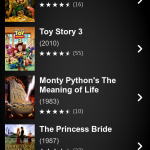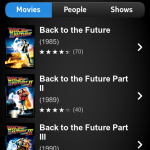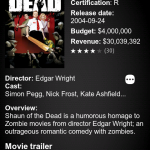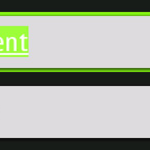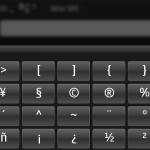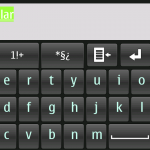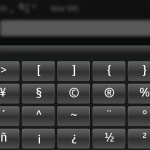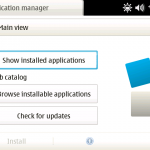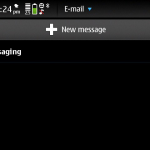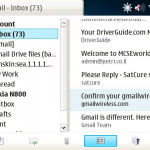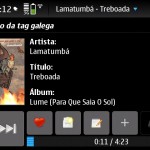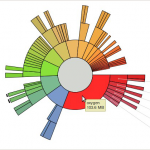About me
I am Felipe Erias, interaction designer and Free SW developer, creating Free Software at Igalia since 2007.
I worked extensively in the core of the Maemo and MeeGo mobile systems that powered Nokia’s extremely innovative GNU/Linux devices: the N800, the N810, the N900, and, finally, the N9.
I have also collaborated in the design of GNOME and, at the moment, I am working on multimedia solutions for mobile and TV.
I graduated in SW Engineering at the University of Corunna (Spain) in 2006, with a final-year project carried out as an Erasmus student at the University of Stuttgart (Germany). In 2010, I completed with distinction the MSc. in Human-Centred Interactive Technologies at the University of York (UK).
I am @felipeerias on Twitter.
Past projects
- Butaca film list (N9)
- Butaca film search (N9)
- Butaca film detais (N9)
- Hildon Input Method – word completion (detail) (N900)
- Hildon Input Method – special characters (N900)
- Hildon Input Method – settings (N900)
- Hildon Input Method – on-screen keyboard (N900)
- Hildon App Manager (N810)
- Modest (N900)
- Modest (N810)
- Vagalume (N900)
- GNOME baobab ringchart widget
TV mediacentre (2012 – present)
At the moment, I am leading the design and working on the implementation of an Android-based, multi-source TV media centre.
Our application integrates the Grilo framework into Android, to provide an efficient and extensive way for fetching media and metadata from a variety of local and online sources. On top of this, we are developing an attractive UI, adapted to the limitations and particular characteristics of our target devices.
More details to be released in due time.
GNOME Epiphany (2011 – present)
Besides reading and making static mockups of different UI ideas for the Epiphany web browser, I also wrote several quick prototypes in QML to explore novel UI ideas interactively.
You can read more about this work in these blog entries, and well as the pages on a reading queue and bookmark management at the GNOME wiki.
This work was an important part of my talks at GUADEC 2012 and FOSDEM 2013.
Butaca, IMDB client Nokia N9 (2011)
Design of Butaca, an IMDB client for the Nokia developed by my colleague Simón Pena.
- http://simonpena.com/blog/category/proyectos/butaca/
- http://projects.developer.nokia.com/butaca/
MeeGo Touch (2011)
As a specialised Qt consultant, I worked for a year in the maintenance and bug-fixing of MeeGo Touch, a Qt-based widget library for the N9 and other MeeGo-based devices.
MSc. HCIT final project (2010)
In 2010, I completed with distinction the MSc. in Human-Centred Interactive Technologies at the University of York (UK), which provided me with a strong theoretical base on the field of user-centred design. My dissertation explored a possible UI for quick document retrieval on the desktop, which required the development of high-fidelity prototypes and user testing with over a dozen participants.
Hildon Input Method (2008 – 2009)
For over a year I was the main developer working on the Hildon Input Method. This was a set of libraries and utilities that handled text input on the Maemo platform. My task was to adapt it to the new version of the platform, Maemo 5, that would be included with the Nokia N900.
The codebase had originally been designed for stylus-based interaction, so it had to undergo big changes to adapt it to the new version of the platform. I worked in close relation with designers and testers, suggesting changes to the design and implementing those changes so they could be evaluated.
The input method has a big impact in several other parts of the platform, and so I had to adequately coordinate my work with other people’s so the overall user experience would be as good as possible. Among other things, we implemented word completion when using the HW keyboard, a view to enter special characters not available on the physical keyboard, a new Settings aplet and several improvements to the on-screen keyboard.
Design for this project usually involved implementing alternative solutions and testing them out as much as possible, either by myself of by involving colleagues, designers and testers. The user’s experience when entering text is not easy to simulate, so actually testing a working prototypes for each proposed change was the best way to get an idea of its impact. I also needed to involve other people for internationalisation, in order to get the best possible layouts for each one of the languages supported.
- http://live.gnome.org/Hildon/HildonInputMethod
- http://maemo.gitorious.org/fremantle-hildon-desktop/hildon-input-method
- http://maemo.gitorious.org/fremantle-hildon-desktop/hildon-input-method-framework
Hildon Application Manager (2008)
The Hildon Application Manager was a high-level tool for managing the installed packages in a Maemo system. It allowed the user to install and deinstall packages from the configured repositories, and it also handled upgrades of the whole system seamlessly. Our target system was the Nokia N810.
One of our main tasks towards improving the user’s experience was to minimise the impact of the limitations in the package management system (e.g. only one action could be happening at any given time). Other tasks that we carried out were improving the visualisation of information and implementing the possibility of performing over-the-air updates.
Modest, mobile email client (2007)
Modest was the default email client for the Maemo platform. It was a good opportunity to see usability problems cropping up in a real-world application. Although the underlying code and libraries were pretty robust, the user interface tried to cram too many features and elements together, which caused bad usability. The version that I worked on was intended for the Nokia N810, which had a stylus-based interface; the version for the Nokia N900 had a much simpler user interface that structured the information in views and subviews, and that was easier to work with the fingers. Although I was not directly involved in that version of the SW, the relevance of this change was a source of inspiration for me when working on other designs.
Vagalume, Last.fm client (2007)
Vagalume is a Last.fm player for desktop and mobile GNU/Linux environments. It was initially developed by Alberto Garcia, a colleague at Igalia. The main functionality of Vagalume is to play Last.fm radios, and it also supports the editing of tags and other functionalities provided by the Last.fm API. The initial simple interface was slowly refined until we reached the design shown in illustration 8. The main design method was to sketch a possible interface on paper, prototype the changes to the UI in the source code and test the resulting implementation among ourselves and with other colleagues. When we got a UI that we thought good, we implemented correctly, released a new version and received input from the community. I also did some graphic work for the project by creating some icons and graphics for the application.
GNOME Baobab (2007)
During my first weeks at Igalia, I worked on the new interface of Baobab, a disk usage analyser integrated in the gnome-utils package. Igalia had been working for a while in a new widget to shows a graphical representation of the disk space taken up by folders and subfolders using a ring chart. The goal was to increase the visibility and appeal of the widget.
Web Solutions at IBM GmbH. (2006 – 2007)
After finishing my final year project for the degree of SW Engineer, I carried out an internship at IBM’s WebSolutions department in Herrenberg, Germany. I developed customer-facing web applications using PHP and JavaScript, and maintained the web server and DB2 database that supported them.
